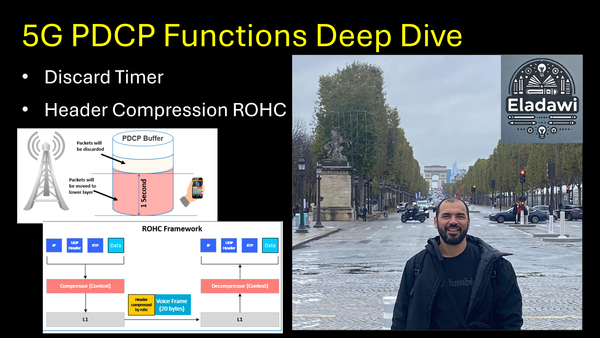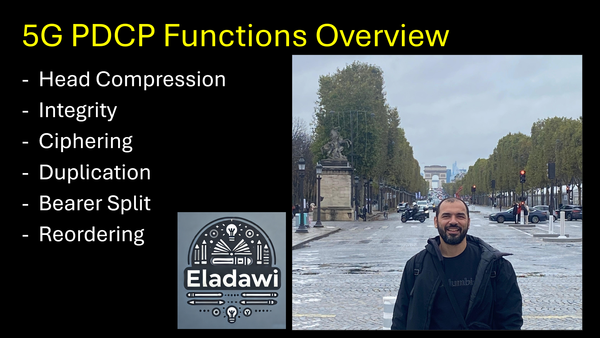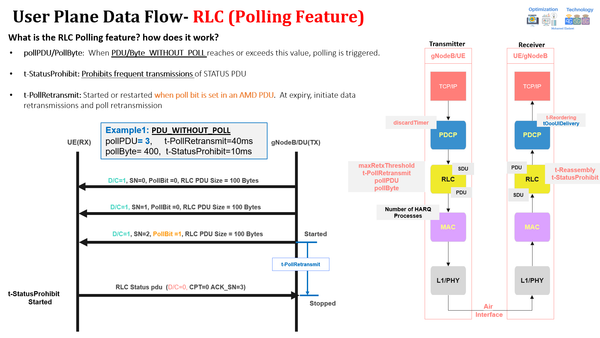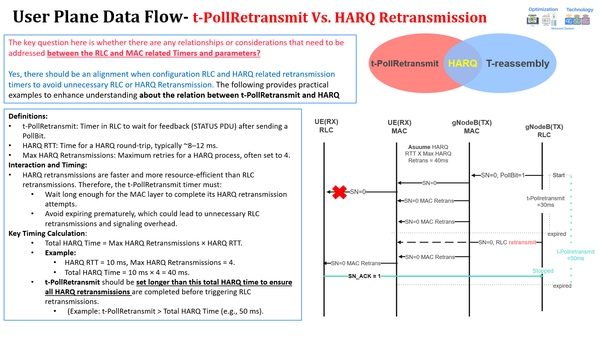What is the Ultra-Lean-Design (5G)?
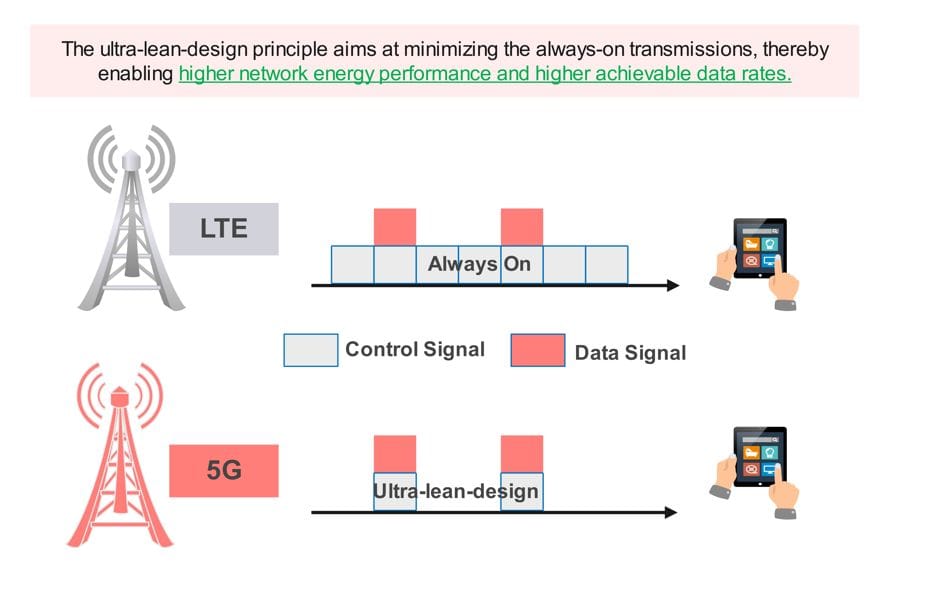
What is Ultra-Lean-Design
- Ultra-lean is one of the three design principles of 5G New Radio which significantly improves network energy efficiency and reduces interference in high traffic load conditions.
But how does it achieve these objectives?
- The so called always-on signals design in the 4G network, where the reference signal is being transmitted at regular intervals even when there is no data transmission (Reference signals, synchronization signals, and system broadcast information are examples of such transmissions, which have to negative impacts
- They impose an upper limit on the achievable network energy performance.
- They cause interference to other cells, thereby reducing the achievable data rates
- The ultra-lean design principle aims at minimizing the always-on transmission where the network should transmit signals only when necessary, thereby enabling higher energy performance, which is vital for a sustainable society. It also reduces network operational expenses and enables higher achievable data rates.
- NR has four main reference signals: demodulation reference signals, phase tracking reference signals, sounding reference signals, and channel state information signals. These signals are only transmitted when necessary, making NR design ultra-lean.
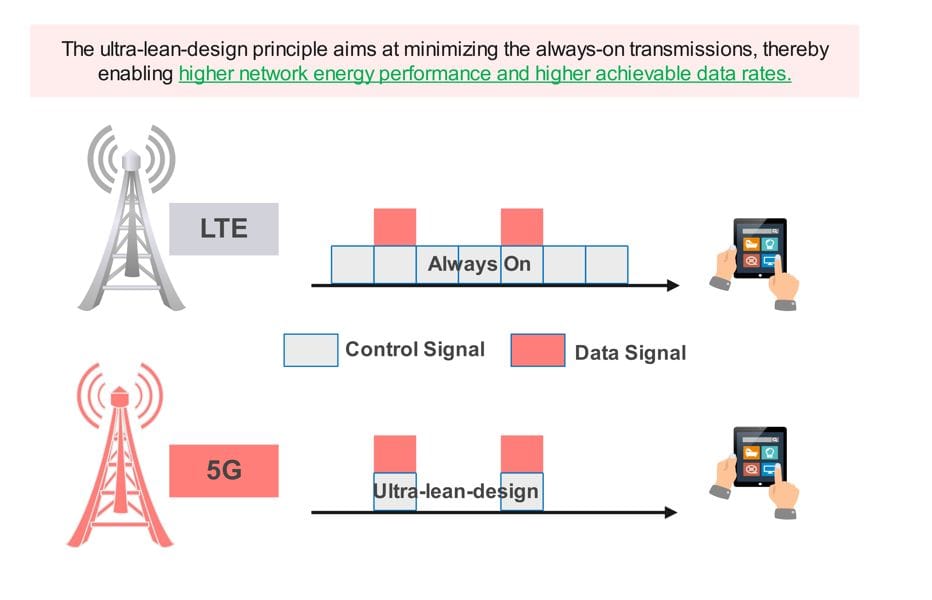
Sources:
- Three design principles of 5G New Radio - Ericsson.com
- 5G NR The Next generation wireless access technology page 59
- What Are the Most Important 5G Technology Keys? - Moniem-Tech

